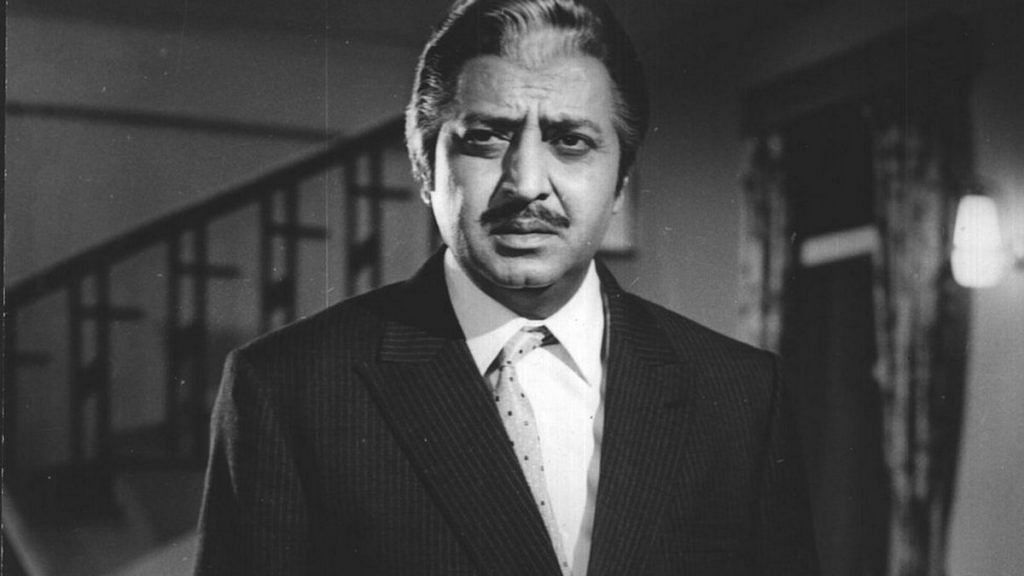He didn’t look as menacing as Amjad Khan’s Gabbar in Sholay (1975) or Kulbhushan Kharbanda’s Shaakaal in Shaan (1980) or even Amrish Puri’s Mogambo in Mr India (1987). He also didn’t have the sophisticated edge as a villain as Ajit’s Loin in Zanjeer (1973) or Danny’s Kancha Cheena in Agneepath (1990). But there was something about Pran Krishan Sikand that made him the most ‘loved’ villain in Bollywood.
When Pran, as he was commonly called, made an appearance on-screen, nobody expected a mandatory rape scene as, say, with other later villains like Shakti Kapoor, Ranjeet or Prem Chopra.
And unlike the long list of Bollywood heroes who began either as villains or character artists — Vinod Khanna, among others — Pran turned to villainy, despite starting out as a hero, because he hated to dance.
On his 99th birth anniversary, ThePrint takes a look at the life and career of the most iconic Bollywood villain.
Also read: Pandit Bhimsen Joshi, Hindustani classical doyen who wanted to spend his life in a garage
Different avatars
Pran was born on 12 February 1920 in the national capital.
Ironically, for a man who redefined on-screen viciousness, Pran began his acting life playing Sita in a local production of Ramlila in Shimla.
Before Partition, he also played the role of a hero in a couple of Punjabi films in Lahore.
However, after moving to Bombay (now Mumbai), Pran became (in)famous as a villain who brought a new look and feel to every role he played. Starting from kohl-laced eyes that gave a menacing look to his particular style of smoking a cigarette or beedi to his dialogue delivery — everything about Pran was picture-perfect. He was as lovable in some movies as he was hateful in the others.
In his early career, in the ’50s and ’60s, Pran worked in popular films like Ziddi (1948), Biraj Bahu (1953), Devdas (1955) and Madhumati (1958).
If we hated his characters in superhits like Jis Desh Mein Ganga Behti Hai (1960) and Ram Aur Shyam (1967), we also loved his on-screen persona in later films like Zanjeer — as the hero’s friend Sher Khan, he made mincemeat of the film’s hero Amitabh Bachchan in some scenes. (Bachchan, who was struggling to deliver a hit in Bollywood, was believed to have been signed as the lead in the film on Pran’s recommendation.)
Also read: Vijay Anand, the ‘guide’ to Dev Anand who was more than just a noir filmmaker
‘…And Pran’
It is often said that Pran and comedians Johnny Walker and Mehmood were the only three character artists in Bollywood for whom roles used to be specially written. Such was Pran’s significance at the box office that he was often paid more than the hero.
Few seem to be aware of the fact that Pran even acted in some Bengali movies.
In the later part of his career, he played memorable supporting parts too, alongside Bachchan, in films like Amar Akbar Anthony (1977), Don (1978) and Sharaabi (1984), among others.
According to the late actor’s daughter, a fan once addressed Pran as ‘and Pran’ in an email since he had this memory of the actor always being credited as the last name in credit rolls — as ‘and Pran’.
That’s also how his biography came to be titled as …and Pran.
Through his career, the actor won several accolades, including multiple Filmfare awards, Padma Bhushan (2001) and India’s highest film honour, the Dadasaheb Phalke Award in 2013 — he died later that year.
In the biography, journalist Bunny Reuben wrote about an incident that underscored why Pran was different from other actors.
At an event, a mimic who was imitating actors like Dilip Kumar, Raj Kapoor and Dev Anand, was asked to imitate Pran. The mimic “fell silent”.
“Then he asked the person who had made the request: ‘Which role of Pran’s should I imitate?’” Reuben wrote.
That is the legacy of Pran.
